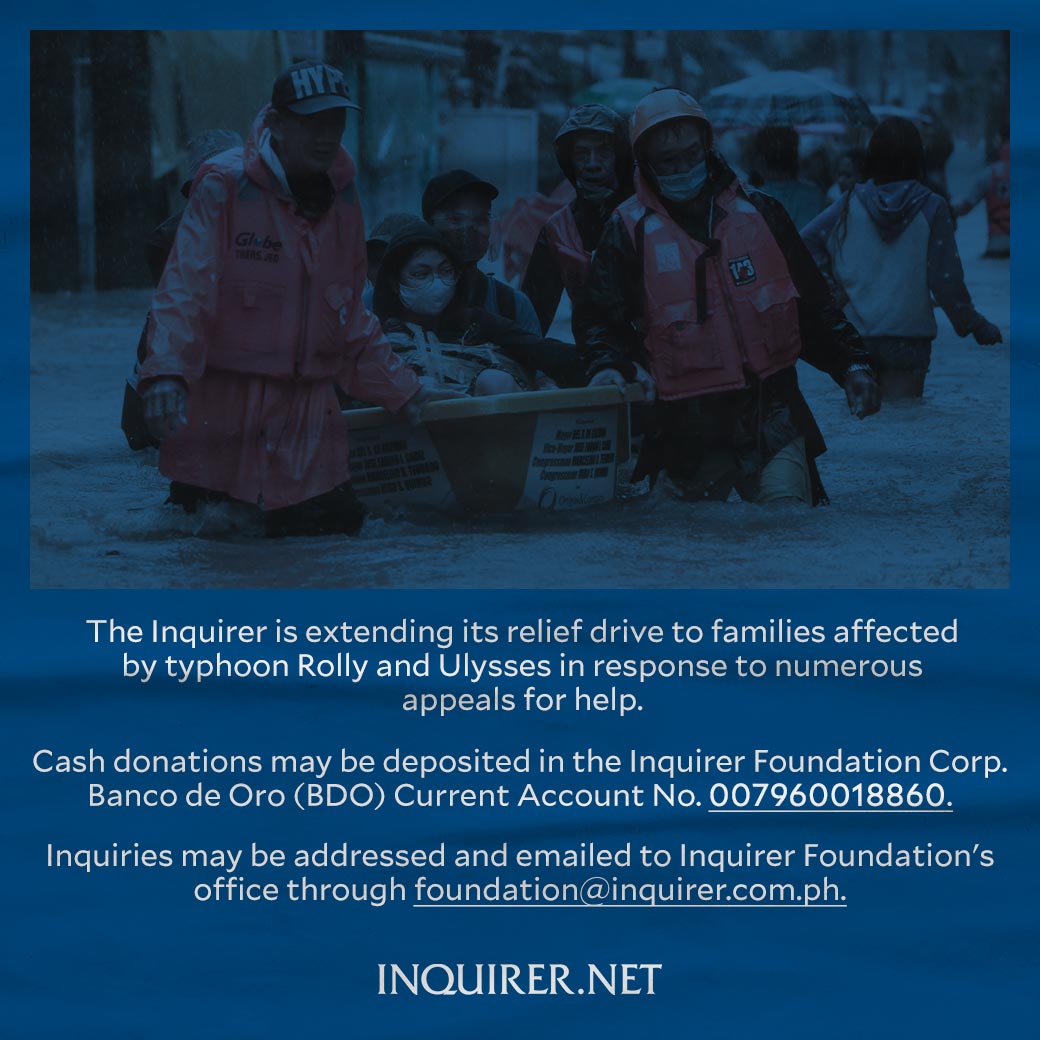‘100-year flood’ returns to Cagayan Valley
In what was described by a scientist as a “100-year flood,” defined as a massive flood that has a 1 percent chance of taking place each year, an unprecedented number of towns in the Northern Luzon provinces of Cagayan and Isabela experienced massive flooding in December 2019. There was no typhoon signal but days of monsoon rains submerged so many barangays and resulted in numerous towns becoming virtual islands.
Less than one year from what was supposed to be a “100-year flood,” an even bigger deluge came to wreak havoc on the two provinces last week. Again, there was no typhoon signal raised over Cagayan but heavy monsoon rains and floodwaters from nearby provinces affected by Typhoon “Ulysses” caused more towns to be submerged in water levels higher than last year. In our town of Alcala, Cagayan, only one of the 25 barangays was not underwater.
With this recent flood comes the usual condemnation of the release of floodwaters from Magat Dam in Isabela as the main culprit. But if you talk to old timers, they remember that the floods were even bigger before the dam was built in the 1970s because heavy floodwaters flowed continuously without a dam’s catch basin to fill up first.
Article continues after this advertisementBeyond the dam, the principal culprit is the massive deforestation of our watershed areas which serve to regulate the release of rainwater from our hills and mountains, and the decimation of so many trees in our communities which function to increase the absorptive capacity of our grounds.
The transformation of our hills and mountains into corn fields is a major cause of deforestation, apart from illegal logging. Corn farming entails the clearing of trees and the use of herbicides that kill all vegetation and weaken the soil. Corn farmers are among our poorest agricultural workers. Local government units (LGUs) should encourage farmers to abandon yellow corn and to shift to agroforestry such as fruit-bearing trees, intercropping them with coffee, cacao, citrus, ginger, with native timber as windbreaks.
Also with the recent flooding, there is the typical call to engage in more river dredging and concreting of river dikes. Apart from the fact that dredging and dike construction are the most graft-prone government projects, they are usually undertaken with little scientific support, making them ineffective and a waste of funds.
Article continues after this advertisementLGUs can take heed from Alcala’s approach when it hired scientists led by Dr. Fernando Siringan, one of our country’s top geologists, to conduct a study on flood and riverbank erosion on the Cagayan and Pared Rivers in Alcala. After months of studying the rocks, banks, vegetation, channel width, river depth, flood plain, and affected communities, the scientists recommended a 30-meter-wide vegetation shield of native trees to form a belt of protection for the riverbanks and the surrounding communities. They also recommended a river channel widening in parts where it constricts from 400 meters wide to a narrow 180 meters, which is a major cause for floodwaters to overflow into the adjoining plains.
The town mayor of Alcala, Cristina Antonio, has sensible insights to share: “(T)he problem of flood in Alcala and Cagayan Valley cannot be attributed to just one cause outside of us, but to a complex, interrelated web with us right at the center. It’s not just about Magat Dam protocols, although in our state of despair Magat Dam is the most visible target. It’s about us, it’s the way we live—as if we are apart from nature, as if what we do does not come back to us. It’s us—how we have cut our trees and destroyed our forests, our soil and groundwater, how we have eaten up the land with farms and buildings.
“The problem being complex, the solution is also a combination of interventions that should be anchored on science and drawn after scientists have studied the Cagayan River itself, after they have walked its banks, felt its current, followed its meander, and seen it in its ebbs and flows. It is not dredging every which way, it is not putting up a dike here and there. It is knowing, based on sound science, what to do and what not to do where in the whole length of the mighty Cagayan River, the longest and largest in the country.”
Comments to [email protected]
















